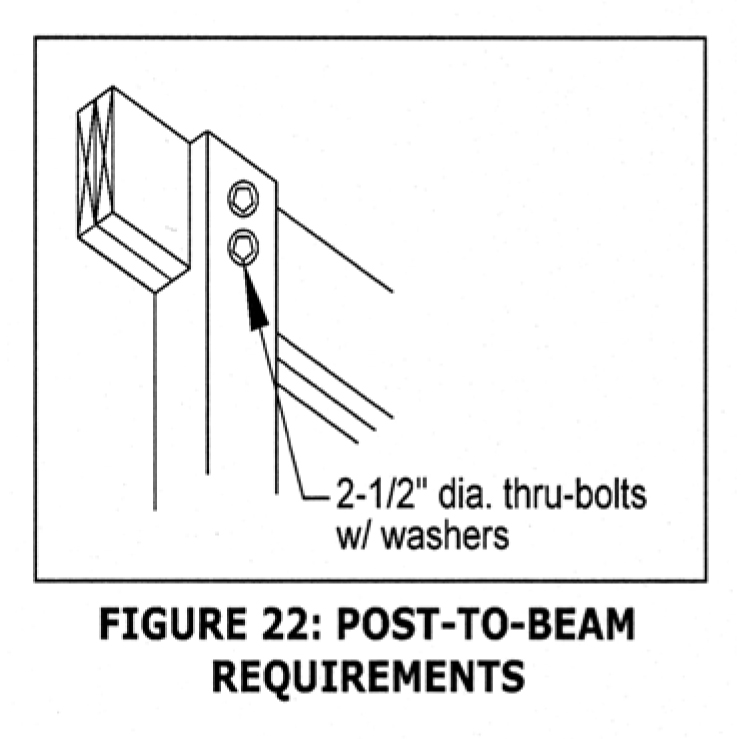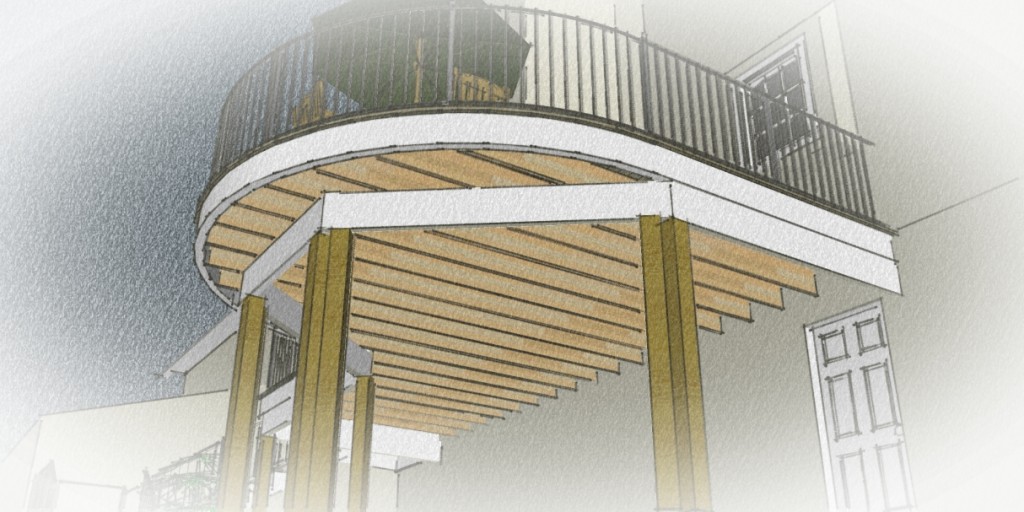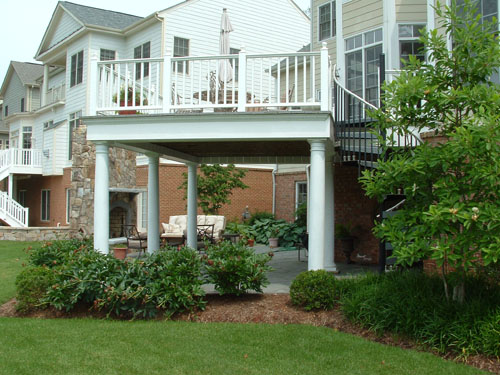Last week I talked about the ledger board and the footers, the first steps in building your deck. Today I’ll cover the next steps.
Posts
The standard spec for a deck is for it to be supported by 6″x6″ pressure-treated posts. Not only are these sturdier than 4″x4″ posts (the old standard), they’re big enough that you can notch the top of the post to carry the beam.
Beams
On your deck, the posts and the beams are doing much of the work. For this reason, the attachment of the beam to the post is a very important detail.

While you can get 4″ or 6″ thick beams, the more common approach is to build up to the required thickness with multiple pieces of 2x lumber fastened together. For example, a typical callout for a beam might be (2) 2x10s or (2) 2x12s. Deck beams can either run under the joists or in line with the joists. An advantage to running the beam under the joists is that if you’re following the Typical Deck Details packet, you can cantilever your joists (let them hang over) up to two feet past the edge of the beam. I’ll do that if we’re doing a curved deck, for example.
An in-line beam can help you out if you’re building a deck that is very low to the ground, where you wouldn’t have enough height to place a beam under the joists. On a taller deck, an in-line beam creates a cleaner look and can make it easier to use the space under the deck for storage or additional patio space.
Joists
The joists carry the deck boards, and therefore act just the like floor joists in your home. The key is to size your joists correctly so the deck feels solid. On a really long span, 2×10 joists might be approved but they could make the deck feel springy in the middle. Joist spacing is also important. While a 16″ on center spacing might work for pressure-treated decking laid perpendicular to the joists, what if you want to set the boards at a 45 degree angle? Composite decking is also a variable to consider, because it can give a little. Set your joists too far apart and you’ll feel the decking give a little underfoot. Even if you’re in no danger of falling through, it’s an unsettling feeling.
The important rule of deck design is that there is no one size fits all approach to building a deck. Not sure where to start? Contact a professional deck designer in your area!



Leave a Reply